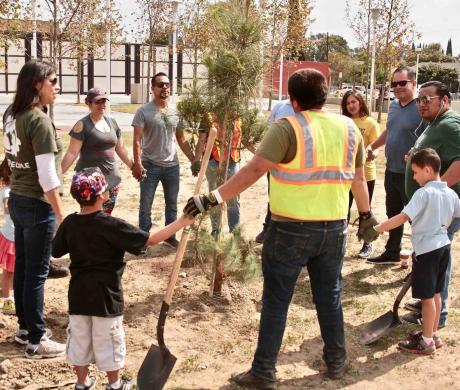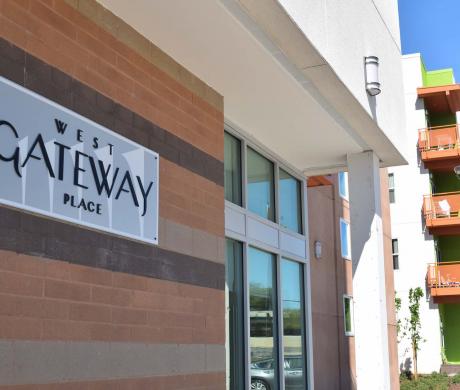Opportunity Zones: Is Your City Ready?
Larry J. Kosmont is chairman and CEO of Kosmont Companies, a real estate and economic development services firm specializing in public-private transactions; he can be reached at lkosmont@kosmont.com. Robert Valenti is a senior project analyst with Kosmont Companies and provided research assistance.
Throughout the United States, city officials, property owners and investors are buzzing about Opportunity Zones (OZs). An OZ is an economically distressed community where new investments may be eligible for preferential tax treatment under certain conditions. Communities qualify as OZs if the state nominates them and the U.S. Treasury certifies them via the Internal Revenue Service. Created by the Tax Cuts and Jobs Act in December 2017, OZs are a new tool designed to spur economic development and job creation in distressed communities by providing tax benefits to investors. California has 879 OZs.
Delayed regulations from the IRS haven’t stopped the OZ frenzy: communities and investors are building plans to catalyze growth in low-income communities, and they are ready to pounce.
Competition will be fierce. Over 100 Opportunity Funds with more than $23 billion are searching for investment-worthy projects of all types. Communities cannot assume that investors will come or that investments will match their city’s goals. Smart communities are preparing and marketing their prime prospects.
In Placentia, City Administrator Damien Arrula is focused on revitalizing the city’s Old Town and transit-oriented district areas through infill and transportation-related projects. He says, “OZ investment has the potential to take our existing revitalization efforts to another level. However, since the OZ toolkit is so new, we need to determine how to best market Placentia’s OZ to the investment and development community. We also need to determine the best ways to illustrate that we are one of the unique California communities with an OZ, especially considering the competition and timing complications.”
Despite Placentia’s economic development initiatives, Arrula notes that because OZs are so new, many questions remain unanswered. He says, “What information is critical for OZ funds? We are nearly complete on the first city-county Enhanced Infrastructure Financing District (EIFD) partnership in California — how can we best use that tool to attract OZ investors and essentially double down on our economic development efforts?” For all cities with OZs, preparation is the key to success.
Four Vital Steps to Prepare for OZs
Step 1. Get Your House in Order. Your community’s planning and approval processes could make or break an Opportunity Zone investment. Review and update your city’s zoning, economic development plans and Specific Plans:
- Do they meet current priorities and needs?
- Do they consider housing and transit priorities?
- Do current and future infrastructure needs align with planning changes?
- Can any approval processes be streamlined for target OZ projects?
Give your community an advantage over other cities by building cohesive, current and comprehensive plans, and pair those plans with fast-tracked approvals for your city’s targets.
Step 2. Educate Your Community — Spread the
Word. Community engagement, input and support are vital
for future OZ success. Projects require support from citizens and
stakeholders throughout your community; given the tight timelines
for OZ benefits, the last thing you want is a surprise
development that generates confusion, controversy
or complaint.
Educate your city council, staff, external stakeholders and community on the merits of the OZ program and your city’s goals for OZ development. Early engagement can generate buzz, and it will help OZ investments meet tight timelines.
Step 3. Know the Strengths and Weaknesses of OZ Investment. OZ investment is a powerful tool in a community’s economic development toolkit, but it is not right for every project. OZ funding is ready to be deployed, and the OZ program’s timing encourages investment sooner rather than later. At the same time, the program’s tight timelines may be difficult for projects that still need California Environmental Quality Act (CEQA) or entitlement approvals.
Consider layering other incentive programs to make good OZ projects look even better. For example, the City of Ontario is considering layering its Opportunity Zone areas with an EIFD, an OZ strategy that was recently identified by state lawmakers. Governor Newsom, in his 2019 state budget address, emphasized that EIFDs are something “we want to pair with Opportunity Zones. That is the big idea.”
This means taking the time to understand all the tools in your economic development toolkit and which types of projects in your community are best served by the Opportunity Zone program. “Ontario’s EIFD strategy is considering linking OZ areas with the airport, using an EIFD as the connection point,” says Scott Ochoa, Ontario’s city manager. “Redevelopment may be gone, but blending the tax increment from EIFDs with OZs is the new world of economic development. If you want to achieve economic viability for your community, these strategies are compelling.”
Step 4. Prioritize! In each of your community’s OZs, identify the prime locations and businesses — find the best fit for Opportunity Fund investment that meets your goals. Consider your city’s unique market forces, zoning and land use. Identify priority projects, hunt for Opportunity Funds with objectives that match your city’s goals and actively market your prime opportunities.
Be Proactive: The Building Blocks of OZ Preparation
After you understand the OZ program and how you can use it in your community, three activities are critically important in creating an implementation plan.
Create a Prospectus
Your community should create an OZ prospectus. This prospectus is a tool the city can use to gather messaging and information in a digestible, user-friendly format.
“It is essential that economic development leaders in cities with OZs determine which projects they prefer and match those preferences to the objectives of OZ investors,” says Blake Christian, a tax partner at HCVT, a national accounting firm that specializes in assisting investors with business and asset dispositions and holistic tax planning strategies, including the analysis and structuring of OZ prospects. “An OZ prospectus can be a key document to help highlight the numerous redevelopment properties, projects and other business opportunities within cities containing OZ census tracts.”
Over 100 OZ investor funds are searching nationwide for investment opportunities, and more are entering the market each week. If done properly and used as part of a targeted investor outreach program, the prospectus can make a difference in attracting national investors who would otherwise look at different communities and direct them toward your community’s development targets.
Assemble a Team
Your community should assemble an OZ task force to implement the OZ program. Successfully leveraging OZ investment will require quick coordination among offices and agencies. Your OZ team should include leaders and department heads of your city’s economic development offices, technical experts and analysts who understand the mechanics of development and outside consultants who can provide strategic expertise.
Build a Package of Complementary Incentives
Your city should identify other incentives that can be coupled with OZ investment. This will improve the feasibility of projects and make your community more competitive. The OZ program does not exist in a vacuum. To increase its potency, it can be layered with other incentives and programs, such as tax-increment financing, transit-oriented development and downtown districts.
The Big Picture
The OZ program is a private-sector tax tool, but it quickly connects back to City Hall. Communities that proactively match private-sector investment with public-sector goals will best leverage this tool to accelerate and amplify economic development in their low-income neighborhoods.
A city can use the OZ program as a central component of its economic development strategy to create jobs, stimulate economic activity and jump-start projects in a community. After a city has properly prepared itself for OZ investment, it can hit the ground running to find market opportunities and target investors.
Resources for Cities
The Institute for Local Government is developing an online resource library at www.ca-ilg.org/oppzones with Opportunity Zone content specially curated for local agencies.
This article appears in the May 2019 issue of Western City
Did you like what you read here? Subscribe to Western City








